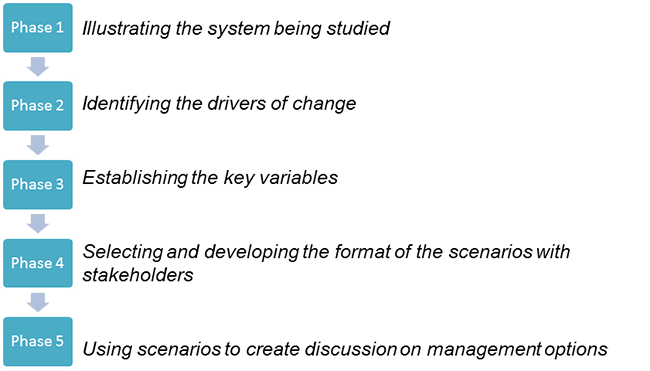4.2 Building scenarios, why and how?

The scenario building process can take several months but can be longer or shorter depending on the methodologies chosen, resources available and the required level of stakeholder participation.
In the context of environmental management, a scenario building process involving stakeholders is a way to:
- Better understand longer-term issues;
- Better understand the links between the ecosystems and human activities;
- Create a “common culture” between stakeholders;
- Develop perspectives together on possible futures (exploratory scenarios);
- Compare these perspectives and choose the best one;
- Develop an action plan (normative scenario) and
- Inform decisions and actions that need to be taken to achieve the desired future.
The aims, and consequently the type of scenarios developed, will be different depending on:
- The management question studied;
- The governance and environmental contexts of the case study sites and
- The legitimacy and skills of the case study team (e.g. implementation of measures).
The scenario building process is divided into 5 complementary phases that occur sequentially.

Figure: 5 phases of the scenario building process
Before beginning the phase 1, a preparatory phase is necessary. It is dealing with the objectives:
- Identify the common focus (management question, issues, topic)
- Define the geographical scope of the study
- Analyse the governance context and define stakeholder participation in the scenario process
- Identify data availability and data issues
These different phases and the associated tools that can be used were developed in the section “Set the framework”![]() .
.
Activity 2: before looking forward to the different phases of scenario building, be sure that you have covered all elements of the preparatory phase. Answer the questions in the context of your case study:
What is your common focus?
What is your geographical scope?
Do you have information about the governance context (or do you know where to gather it)?
List the stakeholders to engage
Are the data you need available?
What are the data management issues?

